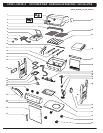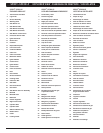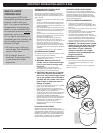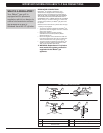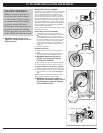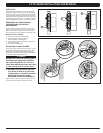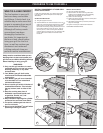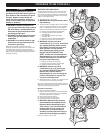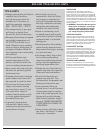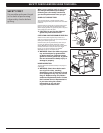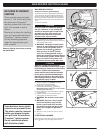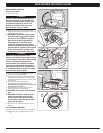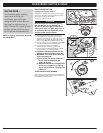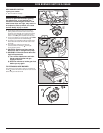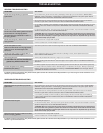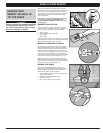Special offers from our partners!

Find Replacement BBQ Parts for 20,308 Models. Repair your BBQ today.

Buy Weber Grill Parts. It couldn't be easier. Find your Weber parts here.

16 WWW.WEBER.COM
®
GRILLING TIPS & HELPFUL HINTS
PREHEATING
Preheating the grill before grilling is important. To
preheat: Light your grill according to the instructions in
the Owner’s Guide; then turn all burners to start/high ( )
position, close the lid, and preheat until the temperature
reaches between 500° and 550°F (260° and 290°C), the
recommended broiling temperature. This will take 10 to 15
minutes depending on conditions such as air temperature
and wind. After preheating, you can adjust the individual
burners as desired.
m WARNING: Should the burners go out
while grill is in operation, turn all gas
valves off. Open the lid and wait ve
minutes before attempting to relight
grill, using the igniting instructions.
COVERED COOKING
All grilling is done with the lid down to provide uniform,
evenly circulated heat. With the lid closed, the gas grill
cooks much like a convection oven. The thermometer in
the lid indicates the cooking temperature inside the grill.
All preheating and grilling is done with the lid down. No
peeking — heat is lost every time you lift the lid.
FLAVORIZER
®
SYSTEM
The closed lid and Flavorizer
®
bars produce that
“outdoor”avorinthefood.Whenmeatjuicesdripfrom
the food onto the specially angled Flavorizer
®
bars, they
create smoke that gives foods an irresistible barbecued
avor. Thanks to the unique design of the burners, the
Flavorizer
®
bars, and the exible temperature controls,
uncontrolled are-ups are virtually eliminated, because
YOU control the ames.
DRIPPINGS AND GREASE
Because of the special design of the Flavorizer
®
bars
and burners, excess fats are directed down the slide-out
grease tray and into the catch pan. Disposable drip pans
that t the catch pan are available.
TIPS & HINTS
•Alwayspreheatthegrillbefore
cooking. Set all burners
on high heat and close lid;
preheat for 10 minutes, or
until thermometer registers
500°–550°F (260° – 290°C).
•Thetemperatureofyourgas
grill may run hotter than
normal for the first few uses.
•Recipegrillingtimesarebased
on outside temperatures of
70°F (20°C) and little or no
wind. Allow for more cooking
time on cold or windy days, or
at higher altitudes. Allow for
less cooking time in extremely
hot weather.
•Grillingconditionsmay
require adjustment of the
burner controls to attain the
correct cooking temperatures.
•Searmeatsandcookwiththe
lid down for perfectly grilled
food every time.
•Crowdingfoodontoacooking
grate means more time will
be required to cook the food.
•Trimexcessfatfromsteaks,
chops, and roasts, leaving
no more than a scant ¼ inch
(6.4mm) of fat. Less fat
makes cleanup easier, and is
a virtual guarantee against
unwanted flare-ups.
•Ingeneral,largepieces
of meat will require more
cooking time per pound than
small pieces of meat.
•Somefoods,suchasa
casserole or thin fish fillets,
will require a container for
grilling. Disposable foil pans
are very convenient, but any
metal pan with ovenproof
handles can also be used.
•Foodsincontainers,such
as baked beans, will require
more time if grilled in a deep
casserole than in a shallow
baking pan.
•Foodsplacedonthecooking
grate directly above burners
may require turning or moving
to a less hot area.
•Usetongsratherthanafork
for turning and handling
meats to avoid losing natural
juices.Usetwospatulasfor
handling large whole fish.
•Alwaysbesuretheslide-out
grease tray and catch pan are
clean and free from debris.
•Donotlinetheslide-out
grease tray with foil. This
could prevent the grease from
flowing into the catch pan.
•Ifanunwantedflare-up
should occur, turn all burners
off and move food to another
area of the cooking grate. Any
flames will quickly subside.
After flames subside, relight
thegrill.NEVERUSEWATER
TOEXTINGUISHFLAMESON
AGASGRILL.
•Usingatimerwillhelptoalert
you when “well done” is about
to become “overdone.”



